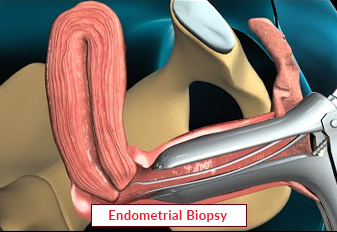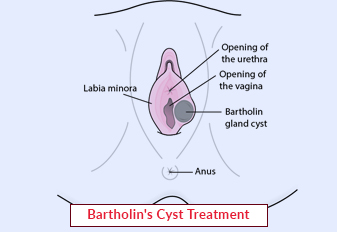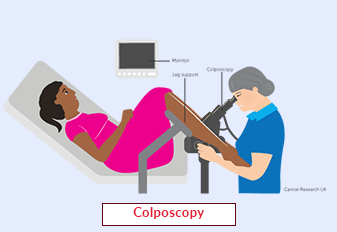Endometrial-Biopsy

Endometrial biopsy is a medical procedure used to collect a small sample of tissue from the lining of the uterus, known as the endometrium. This procedure is performed to evaluate and diagnose various uterine conditions. In this article, we will explore the details of endometrial biopsy, including its purpose, procedure, and what to expect during and after the biopsy.
The endometrium is the inner lining of the uterus that thickens and sheds during the menstrual cycle. An endometrial biopsy involves the removal of a small tissue sample from this lining to examine it under a microscope. This procedure helps healthcare providers assess the health of the endometrium and diagnose potential abnormalities or conditions.
Book an Appointment
About Endometrial Biopsy
The primary purpose of an endometrial biopsy is to diagnose or rule out certain conditions affecting the uterus. These can include:
-
Abnormal uterine bleeding: Biopsies help identify the cause of irregular or heavy menstrual bleeding.
-
Endometrial hyperplasia: Biopsies can determine if the endometrium has overgrown and is at risk of becoming cancerous.
-
Uterine polyps or fibroids: Biopsies aid in identifying the presence of abnormal growths in the uterus.
-
Suspected endometrial cancer: Biopsies are crucial for diagnosing or ruling out endometrial cancer.
Symptoms and Conditions that May Require an Endometrial Biopsy
Endometrial biopsies may be recommended if a person experiences the following symptoms or conditions:
-
Irregular or heavy menstrual bleeding
-
Postmenopausal bleeding
-
Unexplained pelvic pain
-
Abnormal ultrasound findings
-
Fertility issues or recurrent miscarriages
If any of these symptoms or conditions are present, a healthcare provider may recommend an endometrial biopsy to gather more information for accurate diagnosis and treatment planning.
Types of Endometrial Biopsies
There are different methods for performing an endometrial biopsy. The most common techniques include:
-
Manual Endometrial Aspiration: This procedure involves inserting a thin, flexible tube into the uterus to collect the endometrial sample using suction.
-
Dilation and Curettage (D&C): D&C is a more invasive procedure where the cervix is dilated, and a special instrument called a curette is used to scrape the uterine lining for the biopsy sample.
The choice of biopsy method depends on factors such as the individual's specific condition, the healthcare provider's preference, and the resources available.
Preparing for an Endometrial Biopsy
Before an endometrial biopsy, the healthcare provider will provide specific instructions to ensure optimal preparation. These may include:
-
Informing the healthcare provider about any medications, allergies, or medical conditions.
-
Discussing any concerns or questions about the procedure.
-
Scheduling the biopsy at the appropriate time during the menstrual cycle.
-
Avoiding the use of vaginal medications, tampons, or douches for a specified period before the procedure.
It is essential to follow the healthcare provider's instructions carefully to ensure an accurate and successful biopsy.
Procedure of Endometrial Biopsy
During an endometrial biopsy, the healthcare provider will perform the following steps:
-
Positioning: The person will be asked to lie on an examination table, with their feet placed in stirrups to provide access to the pelvic area.
-
Cleaning the Area: The healthcare provider will clean the vagina and cervix using an antiseptic solution.
-
Numbing the Cervix: In some cases, a local anesthetic may be used to numb the cervix and reduce discomfort during the biopsy.
-
Obtaining the Sample: The healthcare provider will insert a speculum into the vagina to visualize the cervix. They will then use a specialized instrument, such as a pipelle or a curette, to collect a small sample of the endometrial tissue.
-
Completing the Procedure: Once the sample is obtained, the instrument will be removed, and any bleeding will be controlled. The sample will be sent to a laboratory for analysis.
Potential Discomfort and Risks
An endometrial biopsy may cause some discomfort or cramping during the procedure. However, the discomfort is usually brief and tolerable. In rare cases, complications may include infection, bleeding, or injury to the uterus or cervix. It is important to discuss any concerns or questions about potential risks with the healthcare provider before the biopsy.
Aftercare and Recovery
After an endometrial biopsy, it is common to experience mild cramping and light spotting for a few days. The healthcare provider may provide instructions on managing any discomfort and when to resume normal activities. It is crucial to follow the post-procedure care guidelines provided by the healthcare provider for a smooth recovery.
Obtaining Results and Follow-Up
The endometrial biopsy sample will be sent to a laboratory for analysis. The results usually take a few days to a week. The healthcare provider will discuss the results with the person and recommend appropriate treatment or further diagnostic procedures, if necessary.
Require Assistance?
Get A Quick Callback From Our Healthcare Experts






